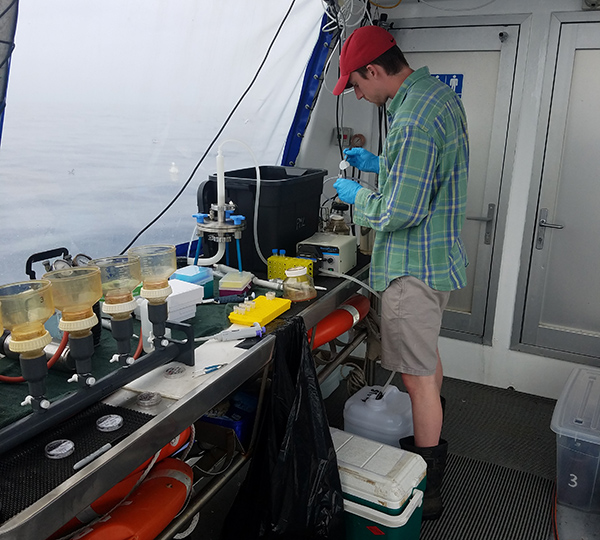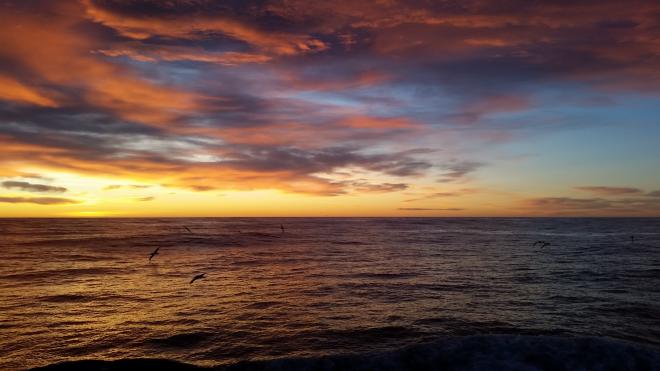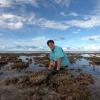Providing global context to the marine methane paradox
Methane is a potent greenhouse gas contributing substantially to global warming. Due to methane’s significant impact on atmospheric warming, understanding the global methane budget is key for formulating realistic plans to mitigate climate change.
Scott Lockwood, a PhD student at the University of Otago, is using NeSI’s newest supercomputer, Mahuika, to investigate some of the causes and contributing factors to methane production.
“Currently there is much uncertainty in quantifying the sources and sinks of methane, as atmospheric methane predictions are challenged each year by unexpected fluctuations,” he says.
Over-saturation of methane relative to the atmosphere is a universal feature of oceanic surface waters, suggesting surface waters as a source of methane. However, oceanic surface waters are highly oxygenated, and the classical model of biological methane production can only occur in environments without any oxygen. This inconsistency is dubbed the “marine methane paradox” and over the past decade, researchers have begun unravelling the mystery behind it.
Studies have demonstrated the ability for microbes to produce methane through an alternative pathway that involves degrading a specific organic compound, methylphosphonate (MPn).
“Our current research investigates what organisms are involved in MPn cycling and if these key players change in different water masses throughout the year, and the relevance of microbial MPn production and consumption across different oceanic water masses and during different seasons,” Scott says.
With sequencing technology improving at an exponential rate and researchers having access to higher and higher sequencing resolution, high performance computing (HPC) resources like NeSI’s have become important tools supporting microbial ecology research like this.
“Primary bioinformatics analyses that push the field forward, such as functional screening of metagenomes and assembling genomes from environmental samples, require tremendous amounts of memory and computing power,” Scott says. “Frankly, without NeSI we would only be able to perform a fraction of the metagenome analysis we do now, and an even smaller fraction of the analysis we want to perform in the future.”
Much of Scott’s work involves collecting water samples from the ocean, sequencing the DNA found in those samples, and then building enzyme databases and environmental metagenomes from the results. NeSI’s Mahuika cluster has been serving as their bioinformatics homebase.
“All of our bioinformatics analysis, from the creation of enzyme databases to screening the metagenomes and assembling genomes, is performed using NeSI’s HPC platform,” he says.
Their primary model system for studying the marine methane paradox is the Munida Time-Series Transect, a long-standing transect located up to 65 km off the Otago Coast. This transect spans several types of water, including coastal, Subtropic, and Subantarctic waters that represent all of the Southern Ocean and 40% of global oceans. Observations from this transect provide global context to the marine methane paradox, giving valuable insight to the players and relevance of an unaccounted methane source in the aerobic ocean.

By looking at metagenomes from different water masses at different times of the year, Scott and his colleagues are able to see whether or not the genes required for MPn production and consumption are present in the microbial community and what organisms are responsible for these functions. Their current dataset has over 80 million pieces of sequenced DNA representing a vast diversity of microbes. That’s where access to NeSI becomes essential.
“Parsing through this amount of information requires machines with plenty of memory and computing power,” says Scott. “If we were to use our in-house servers, analysis that only takes a few days on NeSI’s cluster would take weeks if not months! Not to mention, our in-house server is a shared resource for the entire department and by taking up so much of our limited computing resources, we would ultimately delay everyone else’s work.”
When Scott began working on this project at the start of 2018, he had no previous experience in coding or working in the Linux environment. One-on-one support from NeSI’s Support Team -- particularly Albert Savary -- ensured that wasn’t a barrier.
“Albert took the time to meet with me in person, walking me through all of the basics from connecting NeSI to submitting jobs,” Scott says. “I have submitted plenty of tickets and always receive quick, informative responses even if the issue is something silly like changing a password.”
As their next research endeavour, Scott and his colleagues hope to sequence more than four years of samples from the Munida Time-Series Transect Ocean using NovaSeq, the most cutting-edge technology for high-throughput sequencing.
“This dataset will provide an incredibly comprehensive view of the microbial community and functional profile across a long-term spatial and temporal gradient,” he says. “It will allow us to perform sample-specific genome assembly to compare how a particular organism adapts to seasonal or spatial changes.”
It will also be orders of magnitude larger than the metagenomes they’ve been working with to date. Once again, NeSI resources will play a key role in supporting this work.
“Our lab will most definitely continue to use NeSI for the continuation of this project and any other projects that the data may generate,” says Scott.
---------------------
Have NeSI platforms supported your work? We’re always looking for projects to feature as a case study. Get in touch by emailing support@nesi.org.nz.







